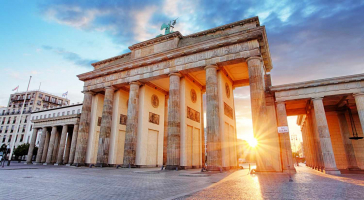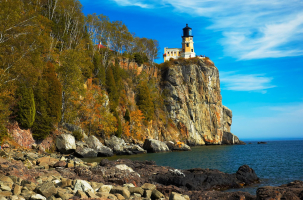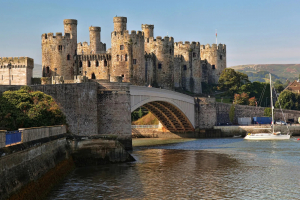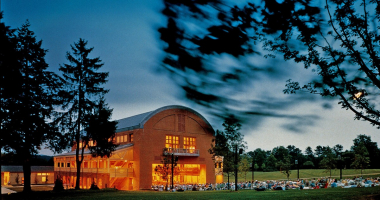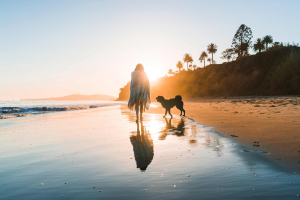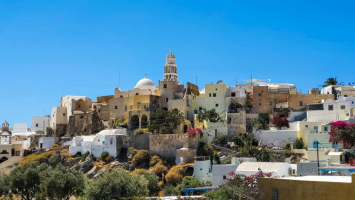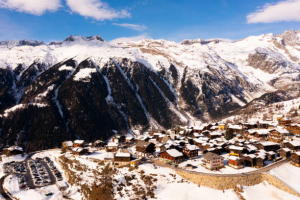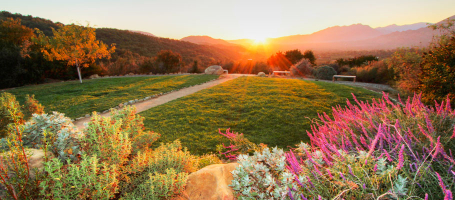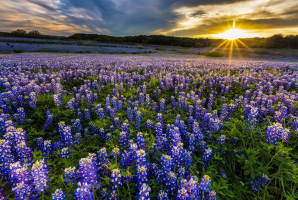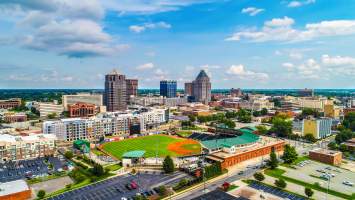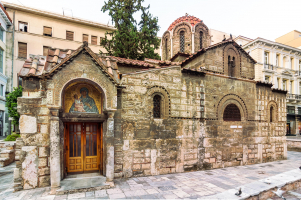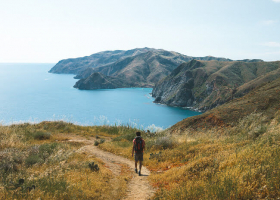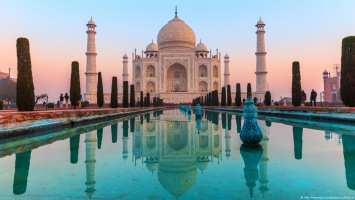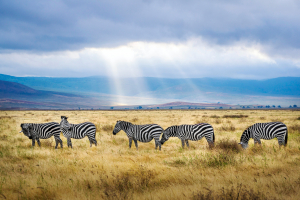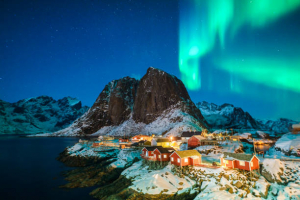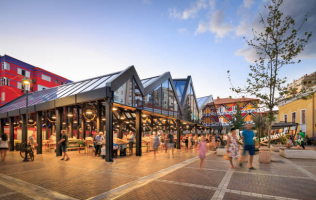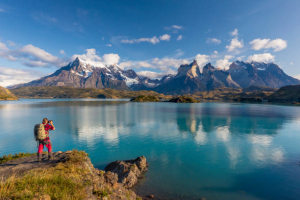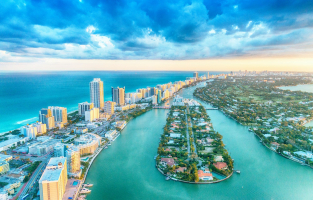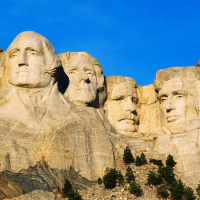Top 12 Best Things To Do in Belize
Belize is a small country, covering around 9,000 square miles. But don't be fooled by its size. Swimmers, snorkelers, and scuba divers will find paradise ... read more...around the barrier reef, such as the Hol Chan Marine Reserve and the Great Blue Hole. At the Belize Zoo, visitors may marvel at Belize's spectacular jaguars, pumas, howler monkeys, parakeets, and keel-billed toucans. And cultural vultures will soar when they visit spectacular Mayan ancient sites such as Corozal, Altun Ha, and Lamanai. With so much to do in Belize, it might be tough to know where to begin. Let's discover the best things to do in Belize now.
-
Despite the fact that it lacks beaches, Ambergris Caye is the most popular destination in Belize. Being an island, there is enough of shoreline to go around, but locating a beach near the main town of San Pedro was difficult 10 years ago, other than a few hotel-made spits of sand.
This 25-mile-long island off the coast of northern Belize appeals to snorkeling and diving enthusiasts with its abundance of outdoor activities. The island was originally populated by the Mayans to serve as a long-distance commerce route stretching from modern-day Mexico to Honduras. Today, Ambergris Caye receives hundreds of visitors looking for convenient access to the island's barrier reef. Hol Chan Marine Reserve will appeal to both snorkelers and experienced divers. San Pedro is home to the majority of diving and snorkeling companies and instructors, including the Belize Pro Dive Center, Tuff E Nuff Tours, and Scuba School Belize, all of which provide a range of daily trips.
Prices vary according on the nature and length of trips, as well as any diving certification expenses. When you're not diving, visit San Pedro, Ambergris' main town. There are oceanfront restaurants, cafes, boutiques, and luxury hotels here. When you stroll onto its cobblestone streets, which are crowded with golf carts and bicycles rather than vehicles, you'll note the difference between this tourist destination and the more metropolitan Belize City.
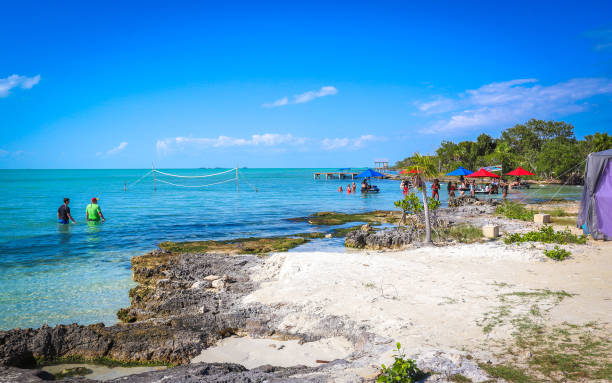
istockphoto 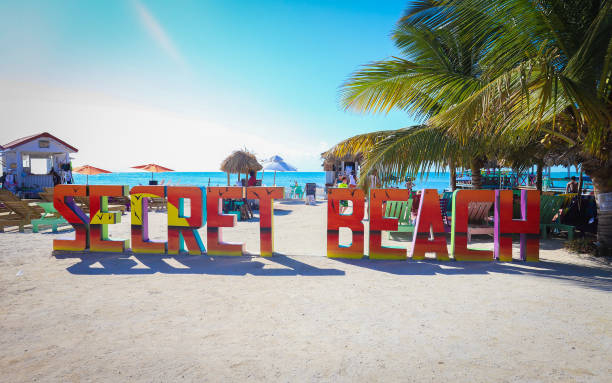
istockphoto -
Plunge into this deep blue hole to see majestic old stalactites (calcium deposits that look like icicles) and coral fringe. The Great Blue Hole was designated a UNESCO World Heritage Site in 1996, along with six other places surrounding Belize's barrier reef, and it remains one of the world's most renowned scuba diving destinations. This blue channel, formed roughly 10,000 years ago when a cave roof collapsed, comprises underwater tunnels, caves, and rock formations.
You'll most likely see marine life along the coral wall at the hole's surface. You'll find the stalactites around 410 feet below sea level, but you're unlikely to see many aquatic critters (save the occasional shark!). Even if you're not a diver, previous visitors suggested snorkeling around the hole and the surrounding reefs. Visit during the dry season, with the best weather most likely in April and May.
The Great Blue Hole is located around 43 miles off the coast of Belize, near the Lighthouse Reef Atoll. There are several diving companies that provide trips to the Great Blue Hole from Belize City, San Pedro, and Caye Caulker. Be prepared to spend an additional $40 in addition to operator costs to dive and snorkel in the Great Blue Hole.
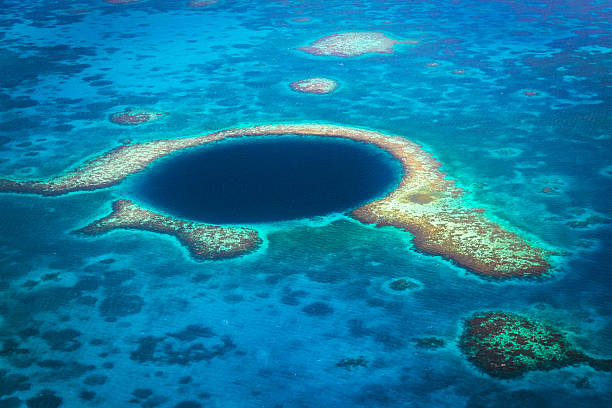
istockphoto 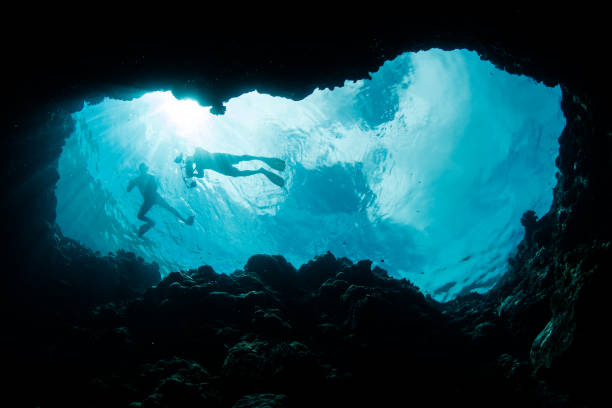
istockphoto -
Hol Chan Marine Reserve, located on the southern tip of Ambergris Caye, is Belize's oldest reserve. The moniker "Little Channel" refers to a coral-filled break in Belize's massive barrier reef. Belize takes its ecosystem very seriously, so respect any and all rules and regulations when it comes to the environment.
The reserve is divided into four sections: mangroves, reef, seagrass beds, and the recently added Shark Ray Alley. Because of its diversity, the reserve has become a popular destination for scuba divers and snorkelers. According to recent visitors, Hol Chan Marine's crystal blue waters and plenty of aquatic life make it an ideal location for snorkeling and diving. On your trip to Hol Chan, you will see the splendor of the Belizean waterways, as well as the hundreds of islands that dazzle in the deep blue seascape.
When you get at the reserve, you will be divided into small groups, one group per boat, to minimize disturbing the coral reef ecosystem. You will also be provided with snorkeling equipment and will be immersed in an incredible experience. You will be stunned by the grandeur and splendor of the magnificent sea life of one of Belize's top places. Swim over the vibrant coral formations and keep an eye out for eels, kaleidoscopic fish, and a plethora of species, some of which are unique to this site. Swim above bright coral formations in Hol Chan, and watch for the sea turtles, that thrive within the protected area.
A day tour snorkeling there and at Shark Ray Alley is a popular way to get acquainted, with both the reef and its inhabitants. Ambergris Caye's reserve is roughly 4 miles southeast of San Pedro. You'll need to arrange a boat and a guide from Caye Caulker to get here. A visitor's center on Caribena Street in San Pedro, which is open daily from 9 a.m. to 5 p.m., may give further information on the reserve and its people.
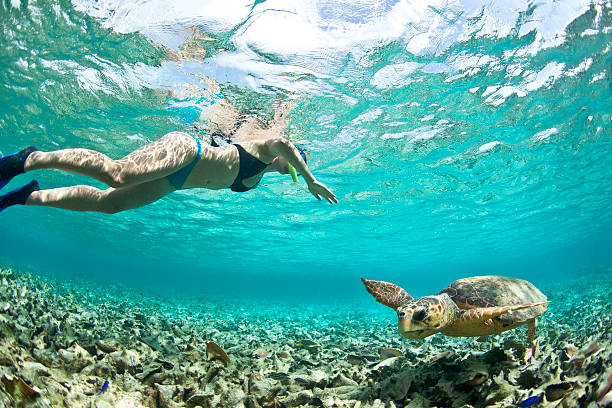
istockphoto 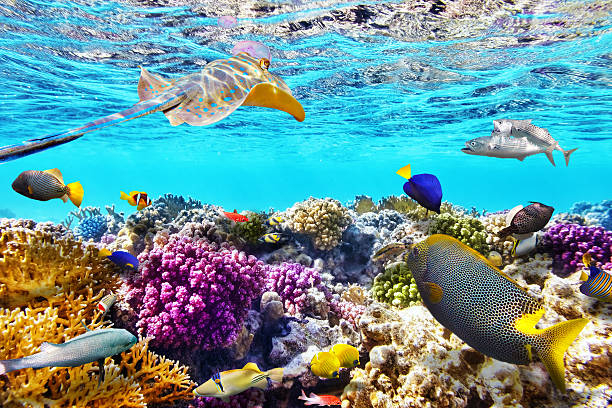
istockphoto -
Caye Caulker has a relaxed Caribbean air, and backpackers and younger people, in particular, tend to gather there, navigating around the dusty island on foot or by bicycle. The biggest draw is the Split beach, which has seaweed-free seas. Caye Caulker, a 4-mile-long sun-soaked island about 20 miles north of Belize City, has excellent diving and snorkeling locations as well as a relaxing tropical atmosphere. Despite the fact that the island is virtually unoccupied by inhabitants, tourists rush to the restaurants, stores, and hotels situated on the northern point near Split (the area where Hurricane Hattie parted Caye Caulker into two halves in 1960).
This secluded island, like Ambergris Caye, provides a wide selection of snorkeling, scuba, sailing, kayaking, and fishing activities to other spots located around the surrounding barrier reef. There are also some unusual attractions, such as Swallow Caye, a manatee protection site. Even if diving beneath the turquoise waters isn't your thing, visitors say the Caye Caulker is the ideal spot to leave your watch at home, roam about barefoot, and eat fresh seafood. From Belize City, you may take a water taxi or an aircraft to Caye Caulker.
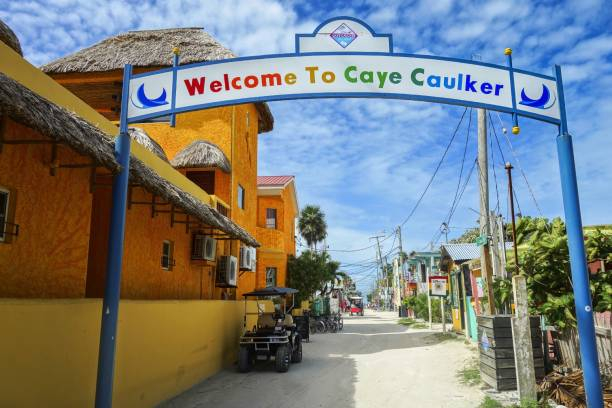
istockphoto 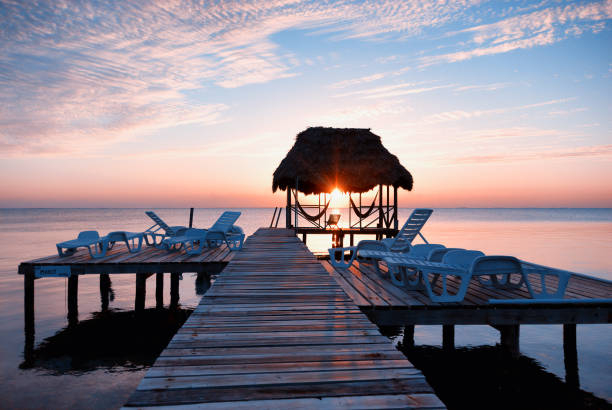
istockphoto -
Travel west of Belize City and you'll come upon a slew of ancient Mayan sites, rolling hills, breathtaking sunsets, quiet butterfly gardens, and lush rainforests. San Ignacio, located in the Cayo District, is a tiny town with traditional gourmet specialities and reasonably priced lodgings. Begin your journey about 6 miles south of town to Xunantunich, an ancient Mayan ruin. The temple at Xunantunich, located along the Mopan River and less than a mile from the Guatemalan border, was once a major ceremonial center for the Mayans.
From there, take the George Price Highway (also known as the Western Highway) south for roughly 60 kilometers to the huge Caracol. Caracol, Belize's biggest Mayan ruin site, dates back to 1200 B.C. and once housed up to 120,000 people. The grounds comprise 30 square kilometers and feature five plazas, an observatory, and over 35,000 identifiable structures, but not all of them have been fully explored. The region is open 24 hours a day, however most of its attractions are only open from 8 a.m. to 5 p.m. Each one costs 10 to 15 Belize dollars (approximately $5 to $7.50).
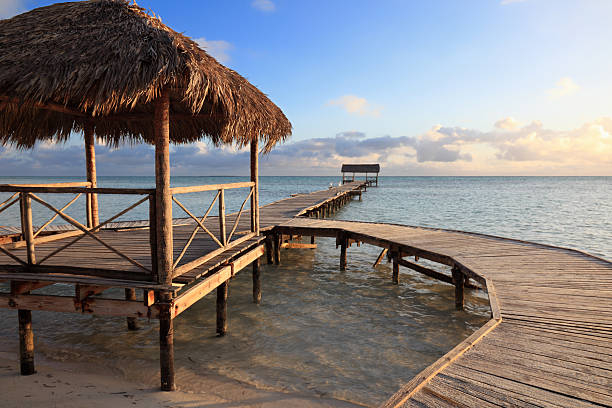
istockphoto 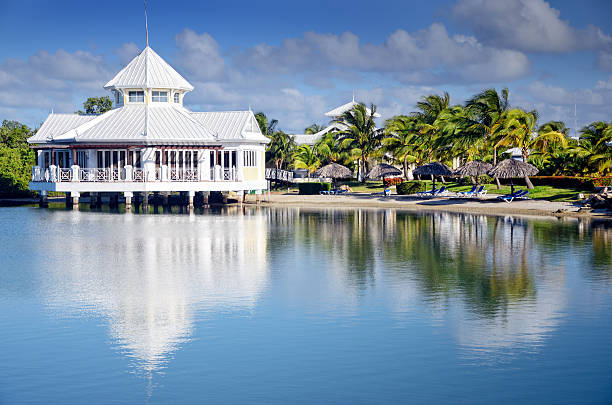
istockphoto -
Placencia is an emerald-green peninsula in southern Belize with 16 kilometers of sandy beaches. The Caribbean Sea is to the east, while the lovely Placencia lagoon is to the west, facing the Maya Mountains on the peninsula. Placencia is split into two sections: south of the airfield and north of the airstrip. A beach cruiser bike can easily explore the entire peninsula.
The eastern side of the Peninsula has a long stretch of white sand beach with dense mangrove in certain sections, while the western side is defined by a long narrow north-south Caribbean Sea Bay. Riversdale Community, Maya Beach Village, the Garifuna village of Seine Bight, and Placencia Village are all significant villages on the 18-mile peninsula from north to south. Placencia Airport serves Placencia, the peninsula's southernmost settlement.
Consider quiet beaches with rustling palm palms, pastel-colored beachfront cottages, and calm Caribbean seas. Placencia is a thriving seaside town in Belize. Consider visiting the Cockscomb Basin Wildlife Sanctuary and the neighboring Mayan ruins while in Placencia. The Monkey River, which is home to crocodiles, howler monkeys, boas, and iguanas, is well worth a visit. Don't forget to try some of the peninsula's cuisine, which is famous for its Kriol (Creole) seafood specialties. Placencia is roughly 130 miles south of Belize City and is accessible by automobile through the Southern Highway. You may also fly into Placencia Airport, which is approximately 20 miles north of the peninsula.
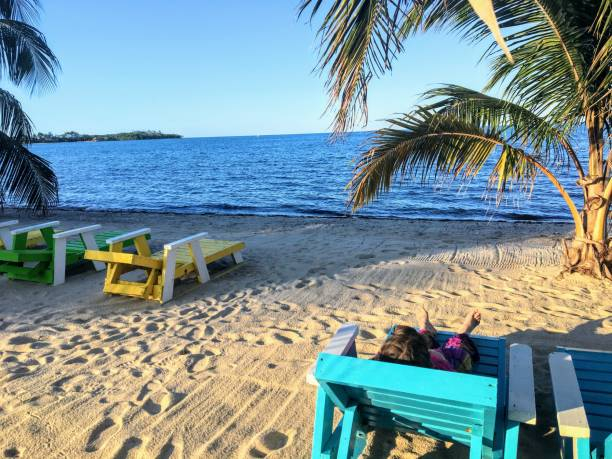
istockphoto 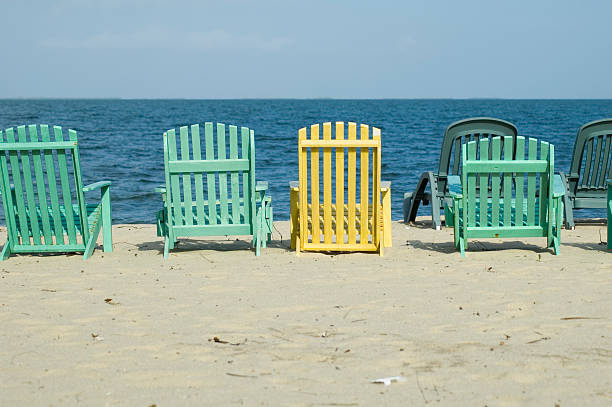
istockphoto -
This vast 960-acre Mayan complex is perched on the New River Lagoon in northern Belize, shrouded in crocodile art. Lamanai means "submerged crocodile" in Yucatec Mayan, which should give you a sense of what you'll find here: artifacts representing the reptile, as well as crocodiles (and iguanas) creeping down the New River's banks to grab some sunshine.
Lamanai is the world's longest-occupied Mayan site, having been inhabited from around 1500 B.C. until A.D. 1700. Its thick site has three Mayan pyramids, the ruins of a 16th-century Spanish church, and a number of notable plazas and temples built during Pre-Classic Mayan dominance. You won't want to miss ascending the High Temple and visiting the Mask Temple, which has ancient items associated to Mayan, Aztec, and Olmec monarchs. Simply bring sunscreen, light clothing, and lots of drink. Every day from 8 a.m. to 5 p.m., Lamanai welcomes tourists.
The entrance fee to Lamanai is 10 Belize dollars (about $5). The Northern Highway connects Belize City to Lamanai. Locals advocate taking a water taxi or a guided river excursion from Caye Caulker up the New River. Tours are available from reputable firms such as Lamanai Belize Tours and Belize Fun Tours, with prices ranging from $60 to $75 per person.
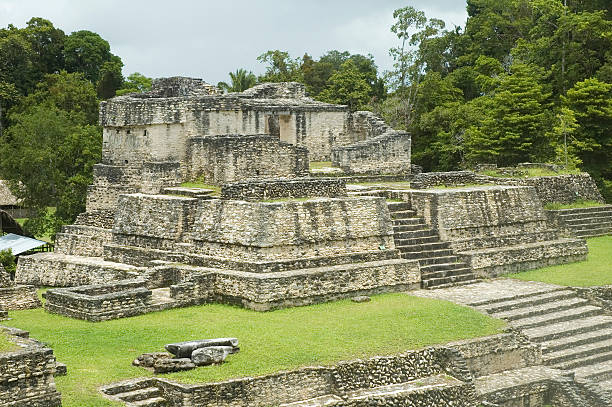
istockphoto 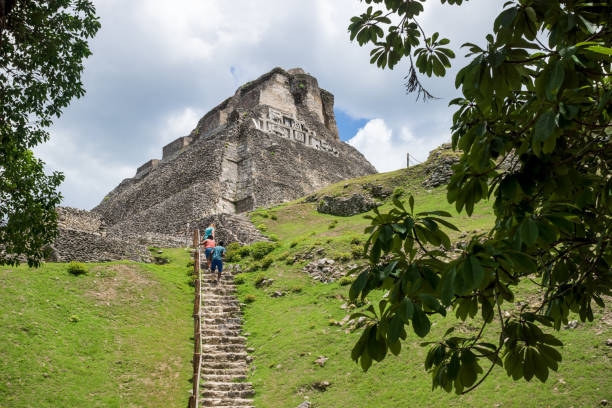
istockphoto -
Altun Ha is the name given to the ruins of an old Mayan city in Belize, which are located in the Belize District around 50 kilometers north of Belize City and approximately 10 kilometers west of the Caribbean Sea. The property is approximately 8 square kilometers in size. This prominent Mayan site, dotted with tombs, pyramids, and temples, functioned as a commercial hub during the Classic Period of the Mayan Empire (A.D. 250 to 900). Altun Ha, which means "Rockstone Pond" in Yucatec Maya, has a man-made lagoon that is still intact. During your visit, you may see foxes, deer, birds, and maybe crocodiles in Rockstone Pond.
Visitors also suggested visiting the Temple of the Green Tomb, where prominent priest-kings were buried with opulent artifacts like jade, earthenware, and pearls. However, if you dislike trekking, Altun Ha may not be for you. While the remains are spectacular, travelers report that the steep climb to the site might be taxing. Consider visiting one of Belize's other Mayan sites, such as Lamanai or the Cayo District, if you want something less demanding. Altun Ha is located in northern Belize, approximately 30 miles north of Belize City, and is readily accessible by automobile through the Northern Highway or by excursion services departing from Caye Caulker. Altun Ha welcomes visitors every day between 8 a.m. to 5 p.m. Entrance costs 10 Belize dollars (roughly $5).
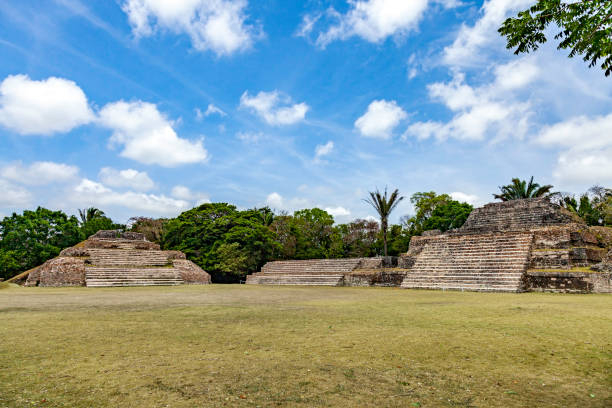
istockphoto 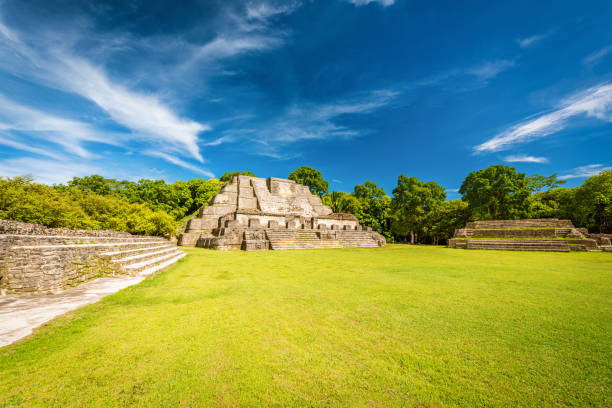
istockphoto -
There is so much wildlife to see in Belize, from jaguars to tapirs to scarlet macaws, and the Belize Zoo is the best spot to see it all. With a mostly rescued animal population, it's an excellent opportunity to experience Belize's biodiversity while also supporting wildlife rescue initiatives. If you walk through this 29-acre zoo, you could assume you've stepped into a jungle. Jaguars scream, keel-billed toucans cry, brilliant scarlet macaws flutter, and coral snakes crawl over the thick forest floor at the little zoo. Look through the zoo's lush canopy trees for Belize's famed howler monkeys, as well as at least one tropical parrot, tapir, Jabiru stork, or harpy eagle.
Keep a watch out for one of Belize's gorgeous native cats, such as margays, ocelots, pumas, and jaguarondis, on the zoo's rustic trail, especially in the late afternoon. According to recent visitors, the Belize Zoo, which began as a rescue center for animals featured in documentary films, feels more like a natural refuge than a commercial zoo. The Belize Zoo is open daily from 8:30 a.m. to 5 p.m., with the final admission at 4:15 p.m. Adult admission is $15, while children's admission is $5. Wear comfortable shoes and pack bug repellant and lots of water because you'll be hiking many paths in the steamy tropics. The zoo is accessible by automobile from Belize City through the Western Highway.
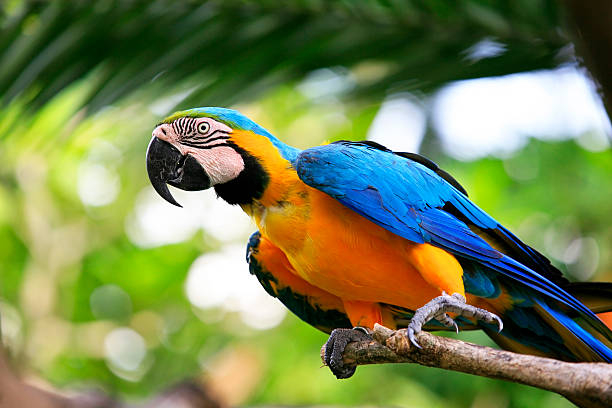
istockphoto 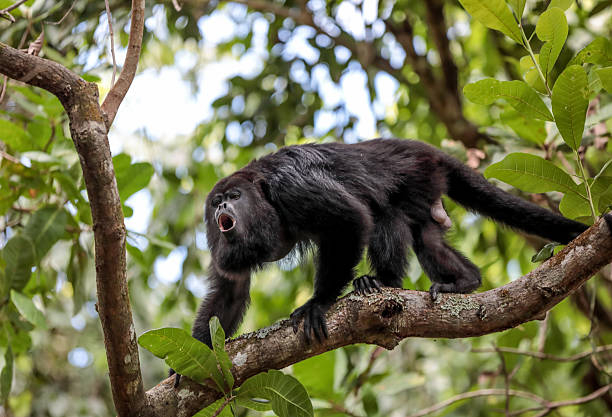
istockphoto -
Belize has the largest concentration of jaguars in the world, and while seeing one is incredibly unusual, your best opportunity is to visit Cockscomb Basin Wildlife Sanctuary in the rainforests of southern Belize. Jaguars control the land in Belize. Cockscomb Basin Wildlife Sanctuary is the greatest site to see these magnificent wildcats. This vast reserve was established in the 1980s to conserve endangered animals in Belize. Cockscomb now has ocelots, pumas, peccaries, tapirs, king vultures, armadillos, and otters, as well as hundreds of local birds. The sanctuary's 150-square-mile area is covered by 12 kilometers of nature trails. You'll probably only have time (and power) to saunter up a few well-marked routes, so choose your choices wisely.
Recent visitors appreciated the reserve's magnificent surroundings, although others complained that the hikes are difficult. Nonetheless, most hikers thought the excursions were worthwhile solely for the scenic views of the country's southern edge. Visit around the beginning of the rainy season or on colder, cloudy days when animals are more likely to be active to increase your chances of viewing active wildlife.
The reserve is open daily from 8 a.m. to 4:30 p.m., and admission is 10 Belize dollars (about $5). The refuge may be reached by automobile from Belize City, which takes about two and a half hours. If you're planning to drive, head on Western Highway, take a left at Hummingbird Highway, turn right on Southern Highway and then make the turn at Maya Center.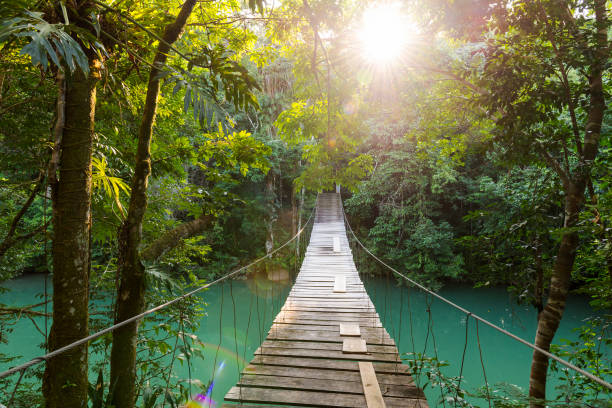
istockphoto 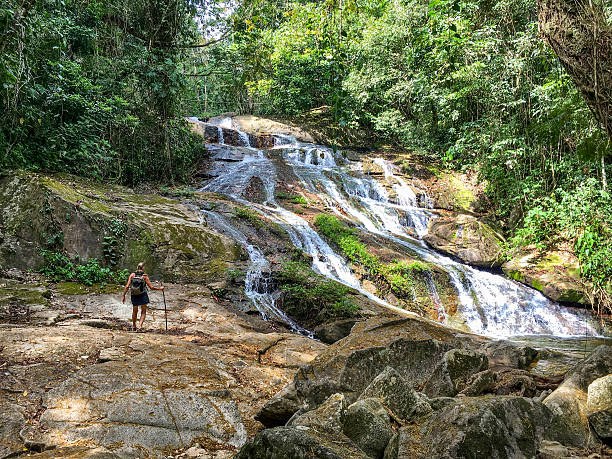
istockphoto -
There are some sights, sounds, and experiences that visitors can only have in specific parts of the world. One such example is bioluminescence. This natural wonder can only be seen in a few places, such as near the Sittee River Marina in Hopkins Village, Belize. Bioluminescence is a beautiful phenomenon caused by saltwater and freshwater interacting with local algae. Aside from the beauty of the dazzling blue light, visitors may also see fish, jellyfish, and other marine life frolicking beneath the surface.
Bioluminescence cruises on the Sittee River in Belize are typically available from January through May. However, because circumstances must be absolutely ideal for trips to depart, it is advisable to come during the driest months (February to April) to prevent disappointment. Tours typically leave at 6:00 PM and return around 9:00 PM. Once the trip departs along the Sittee River, it is only a 5-minute ride to Anderson Lagoon, where the bioluminescence phenomena is most visible. Travelers will be able to see the gigantic mangroves that flank the path as well as the dazzling stars that are poised overhead. Upon your arrival at Anderson Lagoon, your tour guide will stop the boat and allow you to enjoy the bioluminescence experience.
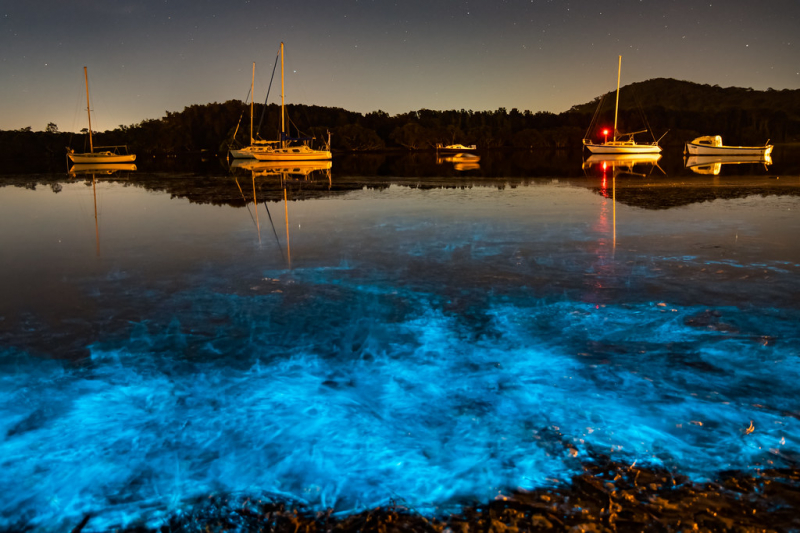
istockphoto 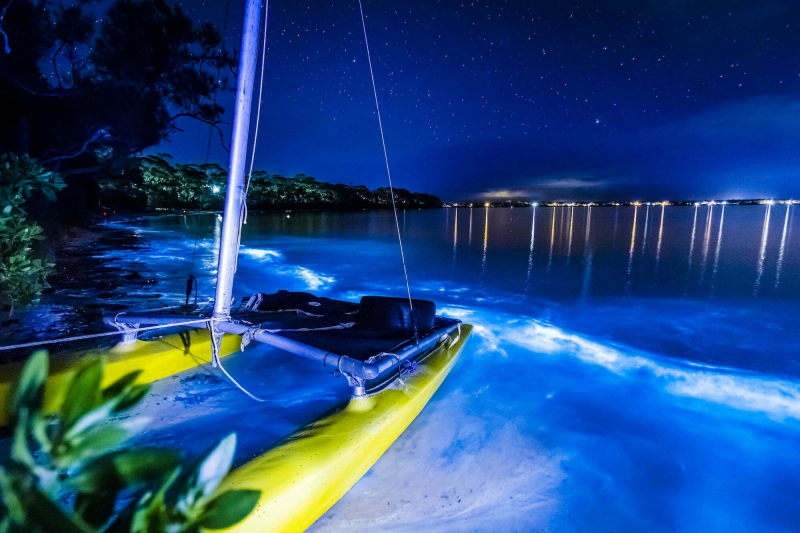
istockphoto -
Visitors visiting Belize can dance to the beats of the Garifuna people at the Lebeha drumming facility near Hopkins. The Garifuna came in Belize in the 1800s after escaping servitude and shipwreck in the Caribbean; they intermarried with the Arawak people of St. Vincent, then fled to Belize to avoid persecution. Garifuna Settlement Day, November 19, is a celebration of that event, including cuisine, dance, and drumming, all of which are important parts of Garifuna tradition.
This is a typical picture on Garifuna Settlement Day, which takes place on November 19, when costumed revelers in tiny communities around southern Belize reenact the arrival of the Garifuna people 218 years ago. When two canoes approach on the horizon, they are full of Garifuna men and women draped in cassava leaves and holding sugarcane stalks. They disembark to tremendous acclaim, followed by a flag-waving parade through the streets. The march concludes in a Catholic church, where people attend a Garifuna-language liturgy.
Today, an estimated 17,000 Garifuna, or Garinagu, live in Belize, accounting for only 6% of the population. Despite the parade hoopla and a UNESCO statement naming the Garifuna language, dance, and music masterpieces of the Intangible Cultural Heritage of Humanity in 2001, the culture is in grave danger. Some ambassadors feel tourism can help conserve the environment. Though Settlement Day occurs every year, here are some more ways to immerse yourself in all things Garifuna during a vacation to Belize at any time of year.
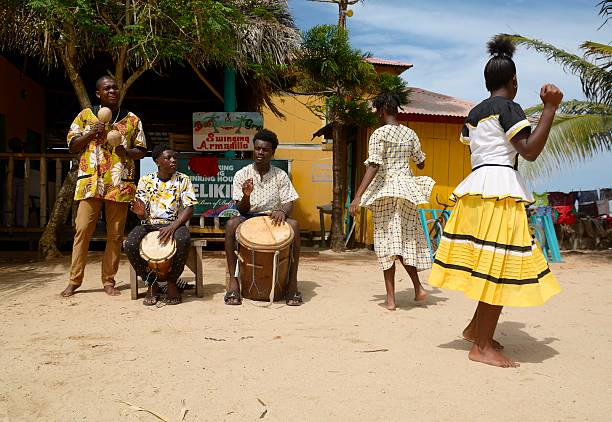
istockphoto 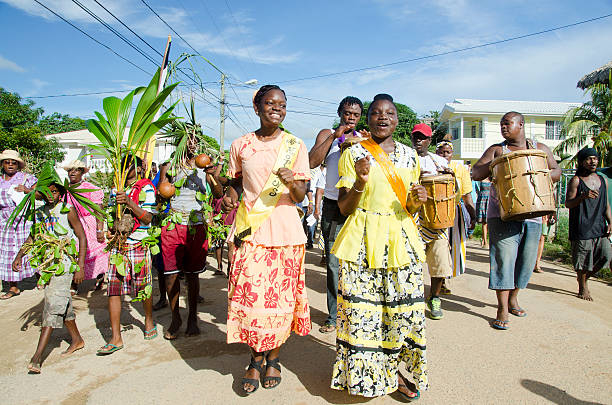
istockphoto














